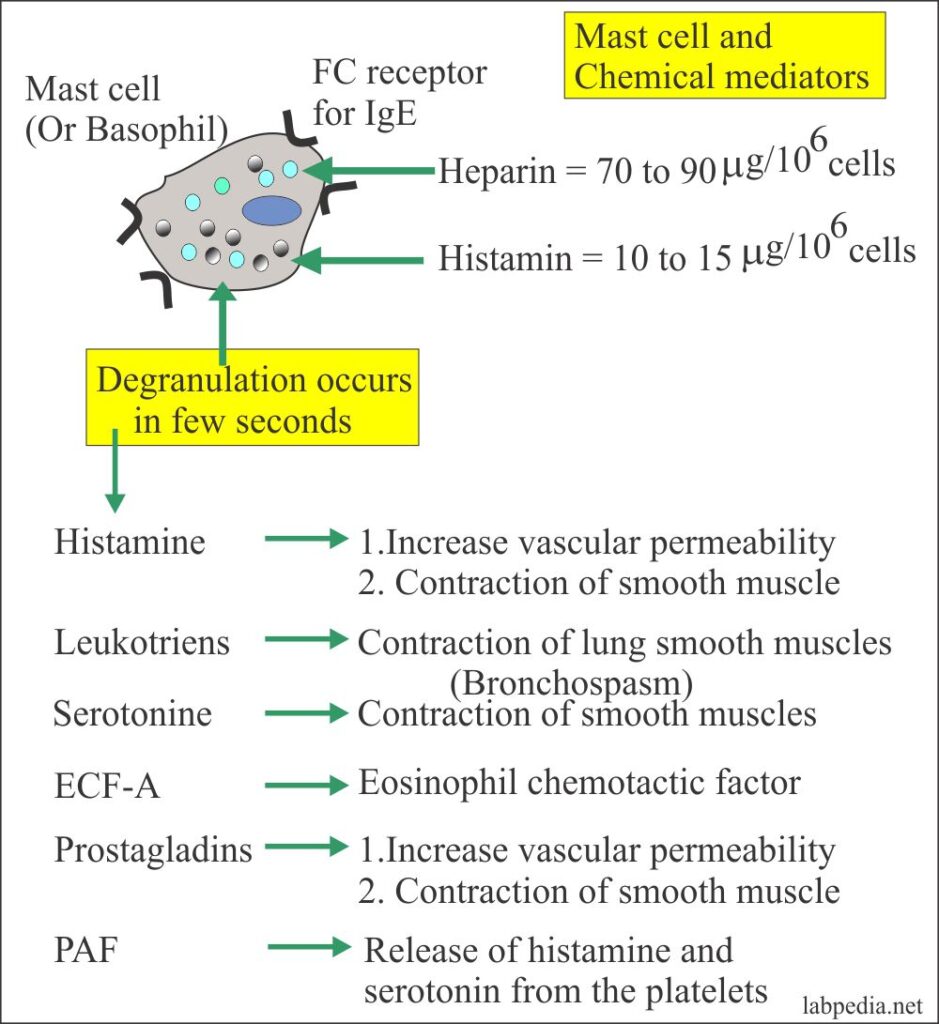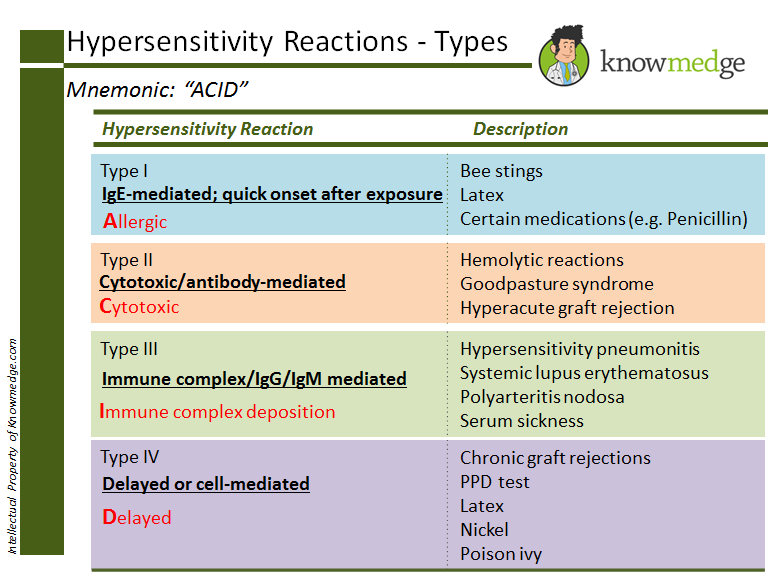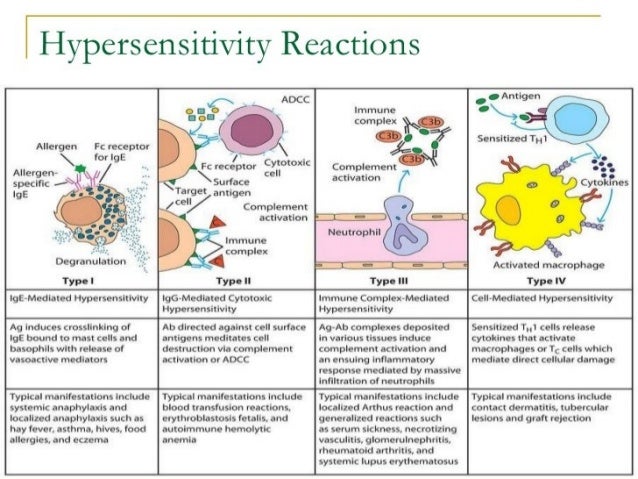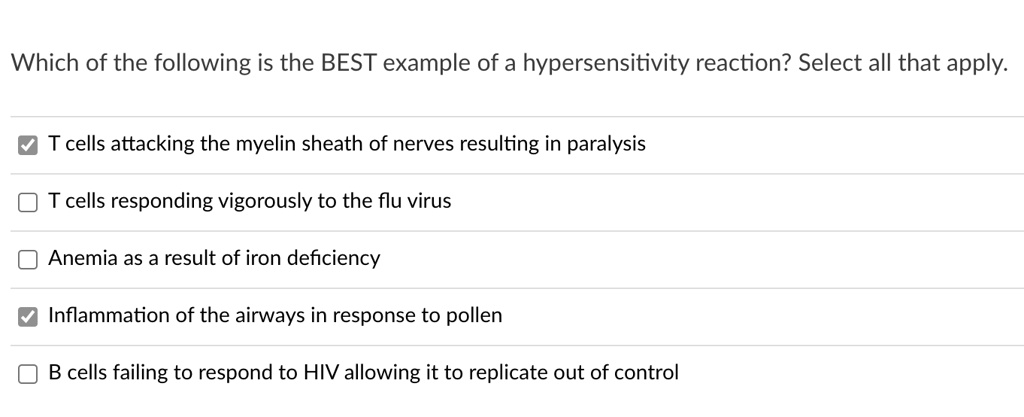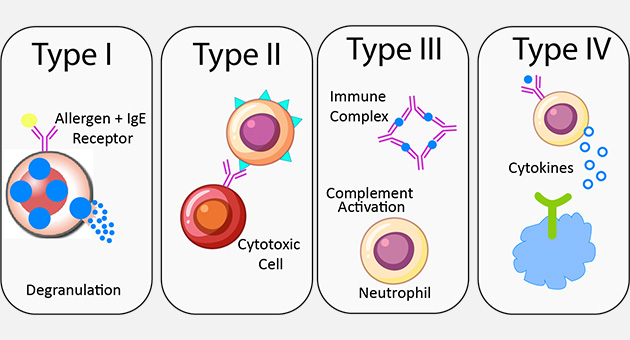All Of The Following Are True Of Hypersensitivity Except

The term hypersensitivity is often used loosely, leading to confusion about its true nature. It's crucial to understand what hypersensitivity *isn't* to better grasp what it is.
This article clarifies common misconceptions surrounding hypersensitivity. We'll explore the true definition and manifestations of this complex condition.
Understanding Hypersensitivity: Separating Fact from Fiction
Hypersensitivity reactions, also known as allergic reactions or sensitivities, are exaggerated immune responses. These reactions occur when the body identifies a harmless substance as a threat.
While the concept is relatively straightforward, its implications and the range of reactions it encompasses are vast. Distinguishing between different types of hypersensitivity is essential for accurate diagnosis and management.
What Hypersensitivity Is NOT
One common misconception is that all adverse reactions to substances are hypersensitivity reactions. This is simply not the case. Toxic effects of a substance, for instance, are not mediated by the immune system.
Another misconception revolves around the intensity of exposure. A reaction occurring only after very high exposure to a substance is generally considered a toxic effect, not hypersensitivity.
Finally, simple irritant reactions, such as skin irritation from harsh soaps, do not involve the immune system. These reactions are a result of direct damage to tissues.
Types of Hypersensitivity Reactions
The Gell and Coombs classification system categorizes hypersensitivity into four types: Type I, Type II, Type III, and Type IV. Each type involves different immune mechanisms and manifests with distinct symptoms.
Type I hypersensitivity, also known as immediate hypersensitivity, is mediated by IgE antibodies. Common examples include allergic rhinitis (hay fever), asthma, and anaphylaxis.
Type II hypersensitivity involves IgG or IgM antibodies that bind to antigens on cell surfaces. This can lead to cell destruction or dysfunction, as seen in autoimmune hemolytic anemia.
Type III hypersensitivity results from the formation of immune complexes (antigen-antibody complexes) that deposit in tissues. This deposition triggers inflammation and tissue damage, as seen in serum sickness and rheumatoid arthritis.
Type IV hypersensitivity, also known as delayed-type hypersensitivity, is mediated by T cells. Examples include contact dermatitis (e.g., poison ivy) and the tuberculin skin test.
Common Symptoms and Diagnosis
Symptoms of hypersensitivity reactions vary widely depending on the type of reaction and the affected organ system. These symptoms can range from mild skin rashes to life-threatening anaphylaxis.
Diagnosis typically involves a combination of medical history, physical examination, and laboratory tests. Skin prick tests, blood tests to measure IgE levels, and patch tests can help identify specific allergens.
In some cases, oral food challenges may be necessary to confirm food allergies. This should always be done under the supervision of a medical professional.
Management and Treatment
The primary goal of managing hypersensitivity reactions is to avoid the triggering allergen. This may involve dietary changes, environmental modifications, or the use of protective equipment.
Medications such as antihistamines, corticosteroids, and epinephrine are used to treat acute reactions. Immunotherapy, also known as allergy shots, can help desensitize individuals to specific allergens over time.
For those at risk of anaphylaxis, carrying an epinephrine auto-injector (EpiPen) is crucial. Knowing how and when to use it is essential.
The Significance of Accurate Information
Misinformation about hypersensitivity can lead to unnecessary anxiety and inappropriate medical interventions. Accurate diagnosis and management are essential for improving the quality of life for individuals with hypersensitivity.
It's important to consult with a qualified healthcare professional for personalized advice and treatment. Self-diagnosis and treatment can be dangerous.
Public awareness and education about hypersensitivity are crucial for promoting understanding and preventing serious reactions.
In conclusion, understanding what hypersensitivity is *not* is just as important as understanding what it is. By dispelling common misconceptions, we can promote accurate diagnosis, effective management, and improved quality of life for those affected.
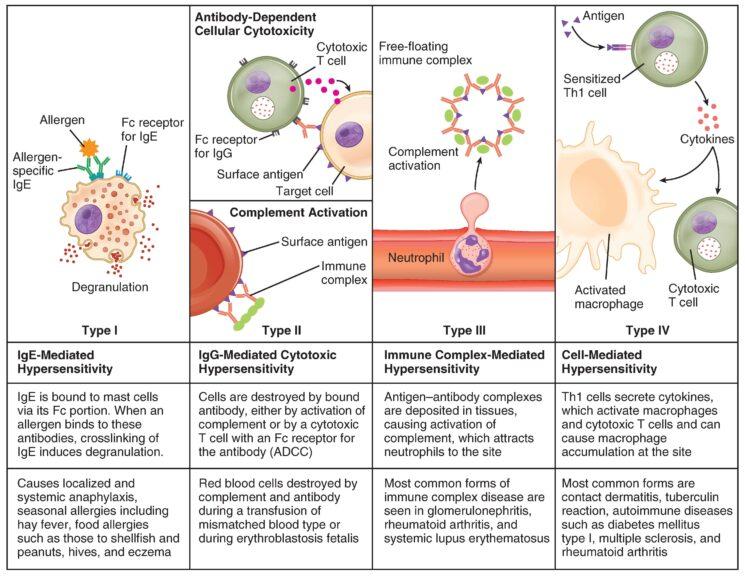
+antigen+presenting+cell+B)+B+cell+C)+IgE+antibody+D)+mast+cell+E)+neutrophil.jpg)




